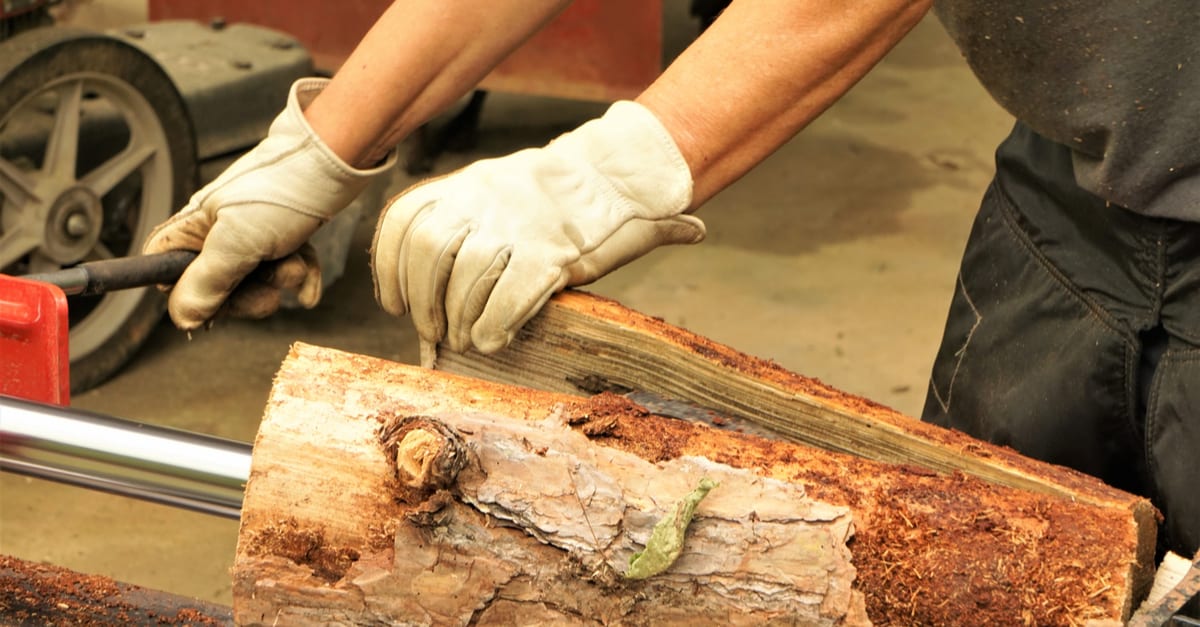Last week, my cousin Gwen came to meet me, so I decided to enjoy the evening sitting in the garden with her.
As Gwen and I were catching up, she happened to mention how juggling work and her two kids was starting to take a toll on her savings. She asked me how to cut back on expenses and told me that her log splitter needed fixing. She said that spending a few hundred bucks on a new one was out of the question.
It was then that I remembered that a while ago, I had learned how to make a log splitter with a hydraulic jack. It had not only worked well but had also saved a fair share of expenses. I helped out Gwen, and she was so glad!
Later it occurred to me that others too might not know how to make a log splitter with a hydraulic jack. I realized this is my chance to help people; if I may preach the word of the Lord – love thy neighbor.
Hi, I'm Stacy Smith. And today, I have listed down the entire process in a few simple steps to help all of you.
So, without further ado, let’s cut to the chase.
Things You Need

Before I begin, it is necessary to keep the following items with you. Go to your nearest hardware store and ask for – a hydraulic jack, sheet metal, steel beam, hydraulic hoses, and a single-blade wedge.
You may need a couple of other items, but I'll discuss those in a bit. Meanwhile, follow these six simple steps I have listed below to make your log splitter with a hydraulic jack.
1. Building the Frame
First and foremost, the frame is essential to deliver the required strength to the hydraulic jack. It has to support the jack as it pushes the wood into the wedge; therefore, try to make it into a sawhorse shape. By doing so, you'll get adequate sturdiness from all the four legs.
You have to determine the frame's size based on the jack, wedge, and wood size. Then, proceed to weld the different materials and watch your frame taking shape.
2. Making the Sliding Block
Next, move on to making the sliding block, which is the part that is designed to hold the wood in place. The best part is that there are no specific measurements, and you can ascertain the size depending upon estimated proportions of the wood you're likely to use.
Always remember to use additional shims to be on the safe side and continuously test the sliding motion to make sure it is smooth.
3. Mount the Jack
Now, let’s come to the most critical part, which deals with mounting the hydraulic jack. To get it right, place the jack at one end of the frame and ensure that it is right above the sliding block. Getting the correct placement is vital as it will help move the block towards the sharpened wedge.
Once you have fixed the position, you will need to keep it in place by securing the neck of the hydraulic jack with a collar and subsequently welding it into the frame. Make sure it isn't wobbly; otherwise, you won't get stable operation.
4. Attach the Wedge
After that, move to the opposite side and start welding the blade into the desired position. Make sure you face the blade towards the jack before mounting it because the hydraulic jack will eventually push the wood towards it.
But in case you fail to find a single-blade wedge, there's no reason to worry. You can use metal pieces for the purpose and weld them on to the sharpened wedge. But before beginning with the welding, it's crucial to have a clear idea regarding the type of wood you're going to cut.
It'll help determine the exact angle of the wedge to get the best performance. And since hydraulic jacks are manually operated, the blades need to be sharp enough to efficiently split the logs.
5. Fix the Wheels
For the next step, you'll have to attach the wheels to the log splitter. Many of you may not consider this to be essential, but I, for one, find it highly useful and recommend it to most people because of the weight.
Once you're done with construction, you'll see that the unit has substantial weight, making it quite cumbersome to move around. As a result, having wheels comes in handy, as it provides greater mobility and makes work more manageable.
It's easy enough to attach the wheels, and all you need are screws to fix them to the central unit. If possible, try to buy wheels that come with a lever, which prevents them from accidentally starting to roll. It'll therefore keep your handmade log splitter in place even when you're using it.
6. Go for A Trial Run
Finally, with all said and done, it's time to take it for a spin. Using it on a trial basis helps you determine the speed and accuracy, thereby allowing you to make the necessary adjustments. You can try using it with different logs to get an idea of how the sliding mechanism works and the sturdiness of the frame.
Similarly, while splitting wood, make sure you get optimal output. If you feel you aren't getting the best results, you can sharpen the blade or weld it at another angle.
Final Words
With that, I have reached the end of my guide, and hopefully, you can make your log splitter. If you don't have the time or interest to build a model yourself, go ahead and check out our manual log splitter guide.
Working with a tool you made from scratch delivers a sense of satisfaction that is hard to compare to anything else. Moreover, it provides an affordable option without taking away the efficiency you desire.
That's all for now; I have to help my neighbors with their gardening. Until next time, Ciao!
